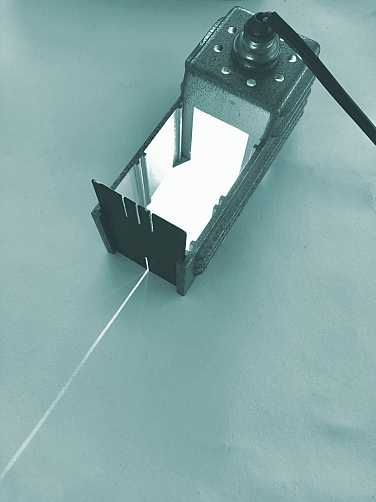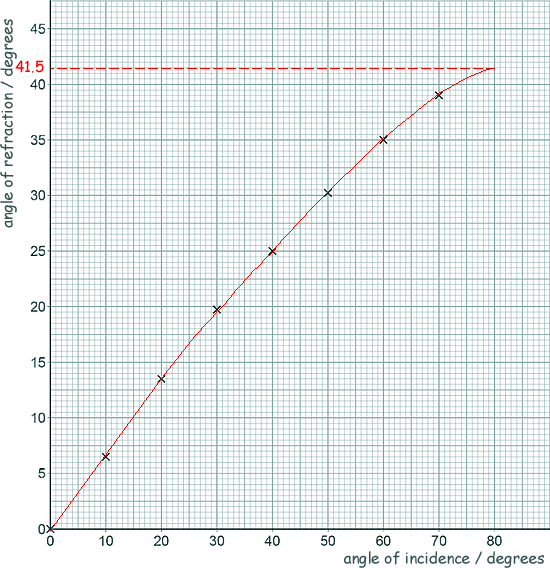GCSE questions on refraction and TIR Q11. Nick investigated the refraction of light at the boundary between air and glass. The photo shows the ray box he used.
(a) The ray of light from the ray box should be as narrow as possible. Explain why using a wider ray would give less accurate results than using a narrower ray. It is harder to judge where the centre of a wider ray is. [2 marks] (b) The graph below shows the results.
(c) Estimate the angle of refraction when the angle of incidence is 80°. Show on the graph how you obtained your answer. The first mark was for a smooth line of best fit drawn and extrapolated to 80 degrees (see graph) Any answer from 40o to 43o got you the second mark. [2 marks] (d) Describe a method the student could have used to obtain the results shown in the above graph.
- the examiner looks for relevant points - but also for a logical sequence... It is not just a 'tick fest' - but a marker does look to see how many relevant points you have made, then considers how you have strung them together to put your answer into a 'level'
Indicative content:
[6 marks] (e) The student repeated each measurement three times. When the angle of incidence was 40° the three measured values for the angle of refraction were:
Estimate the uncertainty in the angle of refraction when the angle of incidence was 40°. Show clearly how you determined your estimate. Method 1 Find Average: (28 + 25 + 22) /3 = 25 Work out variation from it: 28 - 25 = 3 Therefore uncertainty is ±3o
OR Method 2 Max - Min: 28 - 22 = 6 Halved: 6 ÷ 2 = 3 Therefore uncertainty is ±3o
[2 marks] (f) Tick the one of the following properties of a light wave that changes when it is refracted.
[1 mark] (Total 13 marks) |
Follow me...
|







